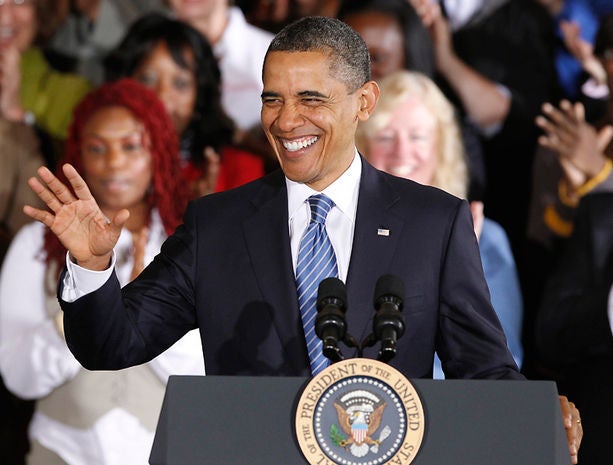
The 2012 budget, released yesterday, was surely one of those tough decisions as it features several cuts to many federal programs and is projected to increase the national deficit this year before it declines next year. The budget also places a new focus on educational investments as Obama explained to a science class at Parkville where students showed him models of the Chesapeake Bay watershed made out of popcorn boxes. The President hopes the majority of U.S. classrooms will soon mirror Parkville’s emphasis on math, science, technology and engineering.
Here’s what you need to know about the $3.73 trillion budget plan Obama sent to Congress on Monday:
What it means for education:
1. The maximum financial aid award will stay at $5,500 to help make college more affordable. This will be done through $100 billion in savings from Pell Grants and other higher education programs.
2. Thirteen education programs will be eliminated, thirty-eight K-12 programs will be whittled into 11, and over 100,000 teachers will receive quality training to build the next generation of global leaders.
3. Obama challenges schools to participate in the “Race to the Top” competition for higher scholastic standards, better teachers and improved math and science scores. Last year, 11 states won $250 million in federal money through this program.
What it means for healthcare and social security:
1. The budget prevents cuts in Medicare reimbursement for doctors so they can keep seeing patients.
2. The Affordable Care Act will cut down on rising health-related costs that add to the deficit.
3. There are no major changes to social security since Obama said he is committed to preserving the system.
What it means for government spending:
1. A five-year freeze on all discretionary spending, with the exception of security, is claimed to reduce the deficit by $400 billion. The plan also includes a two-year freeze on federal civilian worker salaries that will likely affect the 17. 4 % of African-Americans that make up the federal workforce.
2.Community Development Block Grants will be cut by $300 million. In the past, these Grants have helped many African-American communities by providing decent housing, rebuilding community centers and creating financial opportunities.
3.The Low Income Home Energy Assistance Program (LIHEAP) has helped families meet heating and cooling costs; and it will be cut in half.
4. Middle-class families will not see tax increases due to a three-year guard from the Alternative Minimum Tax. Those who earn the highest incomes in the country will lose many of the tax breaks enacted under George W. Bush.
What it means for innovation and job growth:
1. Over 80 percent of Americans will have access to high-speed rail within 25 years and the President hopes the U.S. will be the first country to offer electric cars.
2. Over 98 percent of Americans will have access to high-speed Internet. A 2010 Department of Commerce report revealed that black households with the same income and education levels as their white counterparts are still less likely to have broadband access and use the internet.
3. Over 20 new Economic Growth Zones will be established to provide tax incentives for low-income areas.
4. The administration says a $556 billion surface transportation bill will create thousands of jobs.
The President called this budget one of “tough choices and sacrifices” and said most of the cuts would not take place until the end of his first term. It is now up to Congress to accept, reject or modify this proposal.
On Monday, he finished up his Parkville visit by telling students “Your success ultimately is going to mean America’s success.” Right back at you, Mr. President.
What do you think about the President’s 2012 budget?